A comparative analysis of the first cycle degree programmes in business in Turkey in terms of the number of course units and the student workloads
Abstract
This comparative study aims to determine the differences between the curricula of the first cycle degree programmes in business in Turkey in terms of the number of course units and the student workloads. In this context, (1) the courses included in the Bologna course information packages of business schools on their web sites have been examined; (2) course units have been gathered together in content–related groups, (3) the numbers of course units in each content–related group have been determined, (4) total student workload of each content–related group has been determined by means of the institutionally allocated ECTS credits, (5) the differences between public and foundation business schools have been tested for each content–related group in terms of total number of course units and total student workload, and (6) the differences between the business schools using Turkish and those using a foreign language as the medium of instruction have been tested for each content–related group in terms of total number of courses and total student workload. The methods used in the research are document review and multivariate analysis. The data of 147 business schools has been used in the study and the outputs of the research reveal that there are significant differences in most of the content–related groups between both the business school groupings described above at points (5) and (6) in terms of the number of course units and student workload.
Received: 9 October 2020
Accepted: 22 April 2022
Downloads
References
Antony, Jiju. ‘‘Readiness Factors for The Lean Six Sigma Journey in The Higher Education Sector.’’ International Journal of Productivity and Performance Management 63, no. 2 (2014): 257–264. https://doi.org/10.1108/IJPPM-04-2013-0077.
Barnett, Ronald, and Kelly Coate. Engaging The Curriculum in Higher Education. Buckingham: SRHE & Open University Press, 2005.
Bowen, Howard. Investment in Learning: The Individual and Social Value of American Higher Education. New York: Routledge, 1996.
Carpenter, Donald A., and Vijay K. Agrawal. ‘‘Infusing Information Technology into The Core Business Curriculum: A Change Management Project.’’ The Journal of Business Inquiry 7, no. 1 (2018): 3–20. https://journals.uvu.edu/index.php/jbi/article/view/161.
Crebert, Gay, Merrelyn Bates, Barry Bell, Carol-Joy Patrick, and Vanda Cragnolini. ‘‘Developing Generic Skills at University, During Work Placement and in Employment: Graduates Perceptions.’’ Higher Education Research and Development 23, no. 2 (2007):147–165. https://doi.org/10.1080/0729436042000206636.
European Commission/EACEA/Eurydice, The European Higher Education Area in 2018: Bologna Process Implementation Report. Luxembourg: Publications Office of the European Union, 2018.
European Commission Bologna Working Group, A Framework for Qualifications of the European Higher Education Area. Bologna Working Group Report on Qualifications Frameworks (2005).
Fogarty, Timothy J. ‘‘Surrender Dorothy? A commentary on Rebele and St. Pierre.’’ Journal of Accounting Education 48, (December 2019): 71–79. https://doi.org/10.1016/j.jaccedu.2019.100637.
Huselid, Mark A. ‘‘The Impact of Human Resource Management Practices on Turnover, Productivity, and Corporate Financial Performance.’’ Academy of Management Journal 38, no. 3 (1995): 635–672. https://doi.org/10.5465/256741.
Kalaycı, Nurdan. ‘‘An Application Related to Project Based Learning in Higher Education Analysis in Terms of Students Directing the Project.’’ Education and Science 33, no. 147 (2008): 85–105. http://egitimvebilim.ted.org.tr/index.php/EB/article/view/691/139.
Kamel, Sherif. ‘‘The Impact of Business Schools in Transforming the Society Case: AUC School of Business.’’ Journal of Economic and Administrative Sciences 36, no. 1 (2020): 38–63. https://doi.org/10.1108/JEAS-10-2018-0110.
Karjalainen, Asko, Katariina Alha, and Suvi Jutila. Give Me Time to Think. Determining Student Workload in Higher Education. Oulu: Oulu University Press, 2006.
Kember, David. ‘‘Interpreting Student Workload and The Factors Which Shape Students’ Perceptions of Their Workload.’’ Studies in Higher Education 29, no.2 (2004): 165–184. https://doi.org/10.1080/0307507042000190778.
Kincheloe, Joe L. (2004) ‘‘The Knowledges of Teacher Education: Developing A Critical Complex Epistemology.’’ Teacher Education Quarterly 31, no. 1 (Winter 2004): 49–66. https://files.eric.ed.gov/fulltext/EJ795234.pdf.
Kyndt, Eva, Inneke Berghmans, Filip Dochy, and Lydwin Bulckens. ‘‘Time Is Not Enough. Workload in Higher Education: A Student Perspective.’’ Higher Education Research and Development 33, no. 4 (2014): 684–698. https://doi.org/10.1080/07294360.2013.863839.
Griffin, Mamie, and Pedro Coelhoso. ‘‘Business Students’ Perspectives on Employability Skills Post Internship Experience: Lessons from the UAE.’’ Higher Education, Skills and Work–Based Learning 9, no. 1 (2019): 60–75. https://doi.org/10.1108/HESWBL-12-2017-0102.
Hadidi, Rassule, and Daniel Power. ‘‘Management Information Systems (MIS) Curricula Development, Management, And Delivery – Possible Sharing Economy Solutions.’’ Journal of the Midwest Association for Information Systems 1, (2019): 1–9. https://aisel.aisnet.org/jmwais/vol2019/iss1/1.
Lu, Jing, Chad Laux, and Jiju Antony. ‘‘Lean Six Sigma Leadership in Higher Education Institutions.’’ International Journal of Productivity and Performance Management 66, no. 5 (2017): 638–650. https://doi.org/10.1108/IJPPM-09-2016-0195.
MacAulay, K. Doreen, Mark J. Mellon, and Walter R. Nord. ‘‘Reorienting Business Education Through the Lens of Ernest Boyer.’’ American Journal of Business 35, no. 1 (2020): 45–59. https://doi.org/10.1108/AJB-05-2019-0027.
Met, Myriam. ‘‘Making Connections.’’ In Foreign Language Standards: Linking Research, Theories and Practices, edited by June K. Phillips, and Robert M. Terry, 137–164. Lincolnwood: National Textbook Co, 1999.
O’Brien, Christine N., Richard E. Powers, and Thomas L. Wesner. ‘‘Benchmarking and Accreditation Goals Support the Value of an Undergraduate Business Law Core Course.’’ Journal of Legal Studies Education 35, no. 1 (2018): 171–189. https://doi.org/10.1111/jlse.12074.
O’Leary, Simon. ‘‘Graduates’ Experiences of, And Attitudes Towards, The Inclusion of Employability–Related Support in Undergraduate Degree Programmes; Trends and Variations by Subject Discipline and Gender.’’ Journal of Education and Work 30, no. 1 (2017): 84–105. https://doi.org/10.1080/13639080.2015.1122181.
Owen, John P. ‘‘The Role of Economics in Education for Business Administration.’’ Southern Economic Journal 24, no. 2 (1958): 353–361. https://doi.org/10.2307/1055067.
Reichheld, Frederick F. The Loyalty Effect: The Hidden Force Behind Growth, Profits, and Lasting Value. Boston: Harvard Business School Press, 1998.
Rynes, Sara L., and Christine Q. Trank. ‘‘Behavioral Science in the Business School Curriculum: Teaching in A Changing Institutional Environment.’’ Academy of Management Review 24, no. 4 (1999): 808–824. https://doi.org/10.5465/amr.1999.2553255.
Schlee, Regina P., and Katrin R. Harich. ‘‘Knowledge and Skill Requirements for Marketing Jobs in the 21st Century.’’ Journal of Marketing Education 32, no. 3 (2010): 341–352. https://doi.org/10.1177/0273475310380881.
Schlegelmilch, Bodo B. ‘‘Why Business Schools Need Radical Innovations: Drivers and Development Trajectories.’’ Journal of Marketing Education 42, no. 2 (2020): 93–107, https://doi.org/10.1177/0273475320922285.
Tatikonda, Lakshmi. ‘‘Applying Lean Principles to Design, Teach, and Assess Courses.’’ Management Accounting Quarterly 8, no. 3 (Spring 2007): 27–38. https://www.proquest.com/scholarly-journals/applying-lean-principles-designteach-assess/docview/222859350/se-2.
Thomas, Howard, Peter Lorange, and Jaddish Sheth. The Business School in The Twenty–First Century: Emergent Challenges and New Business Models. Cambridge: Cambridge University Press, 2013.
Tomlinson, Michael. ‘‘Graduate Employability: A Review of Conceptual and Empirical Themes.’’ Higher Education Policy 25, (2012): 407–431. https://doi.org/10.1057/hep.2011.26.
Tuning EU. Tuning Educational Structures in Europe – Reference Points for the Design and Delivery of Degree Programmes in Business. Publicaciones de la Universidad de Deusto (2009): 12–23. http://tuningacademy.org/wp-content/uploads/2014/02/RefBusiness_EU_EN.pdf.
Welbourne, Theresa M., and Alice O. Andrews. ‘‘Predicting the Performance of Initial Public Offerings: Should Human Resource Management Be in the Equation?’’ Academy of Management Journal 39, no. 4 (1996): 891–919. https://doi.org/10.5465/256716.
Zighan, Saad, and Ahmed El-Qasem. ‘‘Lean Thinking and Higher Education Management: Revaluing the Business School Programme Management.’’ International Journal of Productivity and Performance Management 70, no. 1 (2021): 675–703. https://doi.org/10.1108/IJPPM-05-2019-0215.
Authors are required to sign and submit a copyright transfer agreement after acceptance but before publication of their manuscript. To that effect, they receive, from the Managing Editor of Tuning Journal for Higher Education, a standard copyright assignment form designed along the following lines:
1. Authorship:
The author who signs the copyright transfer agreement must be the sole creator of the work or legally acting on behalf of and with the full agreement of all the contributing authors.
2. Copyright and Code of conduct:
a) Authors warrant that their work is original; has not been previously copyrighted or published in any form; is not under consideration for publication elsewhere; its submission and publication do not violate TJHE Ethical Guidelines for Publication and any codes (of conduct), privacy and confidentiality agreements, laws or any rights of any third party; and no publication payment by the Publisher (University of Deusto) is required.
b) Authors are solely liable for the consequences that may arise from third parties’ complaints about the submitted manuscript and its publication in Tuning Journal for Higher Education (TJHE).
c) Authors grant to the Publisher the worldwide, sub-licensable, and royalty-free right to exploit the work in all forms and media of expression, now known or developed in the future, for educational and scholarly purposes.
d) Authors retain the right to archive, present, display, distribute, develop, and republish their work (publisher's version) to progress their scientific career provided the original publication source (Tuning Journal) is acknowledged properly and in a way that does not suggest the Publisher endorses them or their use of the wortk.
e) Authors warrant that no permissions or licences of any kind will be granted that might infringe the rights granted to the Publisher.
3. Users:
Tuning Journal for Higher Education is an Open Access publication. Its content is free for full and immediate access, reading, search, download, distribution and reuse in any medium or format only for non-commercial purposes and in compliance with any applicable copyright legislation, without prior permission from the Publisher or the author(s). In any case, proper acknowledgement of the original publication source must be made and any changes to the original work must be indicated clearly and in a manner that does not suggest the author’s and or Publisher’s endorsement whatsoever. Any other use of its content in any medium or format, now known or developed in the future, requires prior written permission of the copyright holder.


1.jpg)
1.jpg)
.jpg)
1.jpg)
.jpg)
.jpg)









